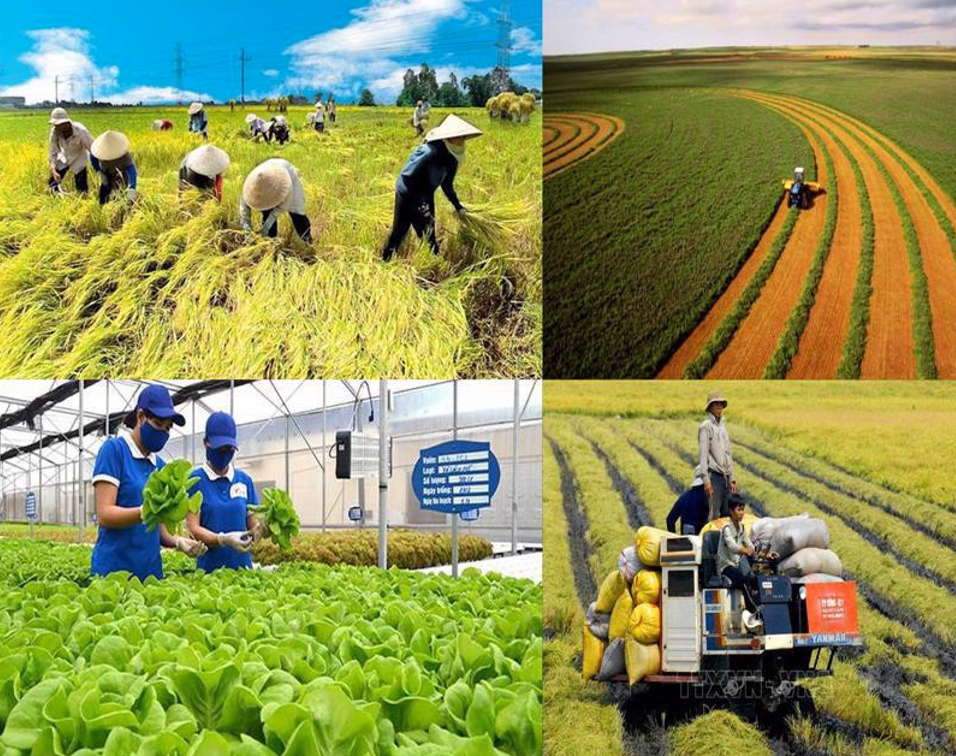Cutting agricultural emissions is an environmental responsibility and a strategic lever for international competitiveness. With vast untapped potential, carbon credits could become a new source of revenue – driving a green transition for millions of Vietnamese farmers and agribusinesses – if the proper legal framework is in place.
Strategy and regulatory framework needed
As the world ramps up efforts to reach net-zero emissions, Vietnam’s agriculture faces pressure to go green and a new opportunity: exporting carbon credits. Experts see this as a form of “soft resource” the country can harness, given its nearly 10 million hectares of farmland, provided a coherent strategy and enabling policy environment. Shifting to low-emission production could allow Vietnamese farm products to penetrate high-value markets such as the EU, Japan, and North America, commanding 10–25% price premiums over conventional goods.
Encouragingly, while national policy is still taking shape, some domestic companies are already embracing the trend. Lam Son Sugar Joint Stock Corporation is a pioneer, developing an organic, low-emission sugarcane farming model over 500 hectares. Since early 2025, the company has partnered with international organizations to launch carbon credit projects and is now seeking global certification for its farming practices. Once certified, it can sell carbon credits, with the benefits shared directly with farmers in its supply chain.
 Reducing agricultural emissions is an urgent requirement to enhance competitiveness.
Reducing agricultural emissions is an urgent requirement to enhance competitiveness. However, a significant hurdle remains: Vietnam lacks a precise carbon credit export mechanism. While companies can trade voluntary credits domestically, selling into international markets – where demand and prices are higher – is hampered by the absence of a recognized legal framework and an internationally accredited measurement, reporting and verification (MRV) system.
According to Lam Son Sugar, developing a model that meets international standards requires at least a year of trials. The company believes that if the Ministry of Agriculture and Environment issued standardized production protocols for each crop, it would cut preparation time and enhance the credibility of emissions-reduction calculations.
A new gateway for Vietnam’s agriculture
Although the domestic carbon credit market is beginning to show promise, many businesses say exporting credits abroad remains an unsolved challenge without a complete legal framework. Meanwhile, global demand surges as countries and multinational corporations work to meet their net-zero pledges.
Lam Son Sugar has called on the government to finalize a transparent voluntary carbon market mechanism aligned with supply-demand dynamics and international norms. It also recommends financial incentives and preferential biomass electricity tariffs for bagasse power generation to encourage green technology investment and secure a stable credit supply.
Both domestic and foreign experts stress the critical role of an MRV system that meets international standards – a prerequisite for Vietnam-issued credits to enter global trading chains.
The Ministry of Agriculture and Environment aims to develop 15 ecological zone models nationwide by 2035. At the local level, several provinces and cities are eager to join the Low-Emission Crop Production Program for 2025–2035. For example, Cần Thơ and Hải Phòng have adopted measures such as using rice straw for winter crops and shifting to low-emission rice varieties. However, many localities still lack data, hands-on experience, and pilot models to replicate.
Officials in Tay Ninh province argue the program must first assess the crop sector’s current position to identify suitable crops for each region. Every terrain type and crop group requires tailored solutions and timelines.
According to businesses, the Ministry’s targets should be backed by a concrete roadmap and precise financial mechanisms, particularly for agricultural extension services and cooperatives. Ultimately, the key to promoting low-emission farming is to make the economic benefits compelling. When farmers see a clear path to higher income, they will be eager to participate.